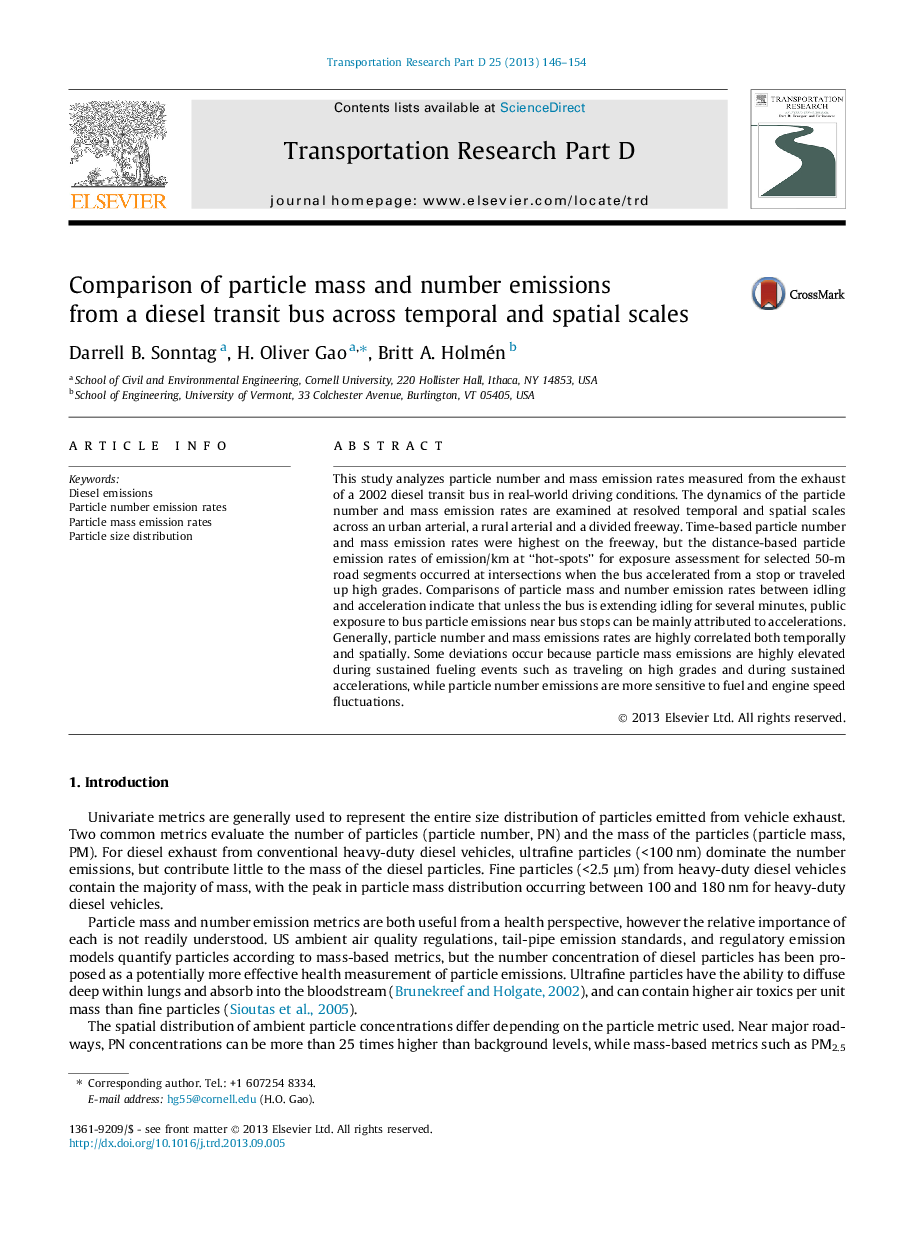| Article ID | Journal | Published Year | Pages | File Type |
|---|---|---|---|---|
| 1065824 | Transportation Research Part D: Transport and Environment | 2013 | 9 Pages |
•Time-based particle emission rates from buses are highest on freeways.•Distance-based particle emission rates occur at intersections when a bus accelerates from a stop or traveled up high grades.•Generally, particle number and mass emissions rates from buses are highly correlated temporally and spatially.
This study analyzes particle number and mass emission rates measured from the exhaust of a 2002 diesel transit bus in real-world driving conditions. The dynamics of the particle number and mass emission rates are examined at resolved temporal and spatial scales across an urban arterial, a rural arterial and a divided freeway. Time-based particle number and mass emission rates were highest on the freeway, but the distance-based particle emission rates of emission/km at “hot-spots” for exposure assessment for selected 50-m road segments occurred at intersections when the bus accelerated from a stop or traveled up high grades. Comparisons of particle mass and number emission rates between idling and acceleration indicate that unless the bus is extending idling for several minutes, public exposure to bus particle emissions near bus stops can be mainly attributed to accelerations. Generally, particle number and mass emissions rates are highly correlated both temporally and spatially. Some deviations occur because particle mass emissions are highly elevated during sustained fueling events such as traveling on high grades and during sustained accelerations, while particle number emissions are more sensitive to fuel and engine speed fluctuations.
